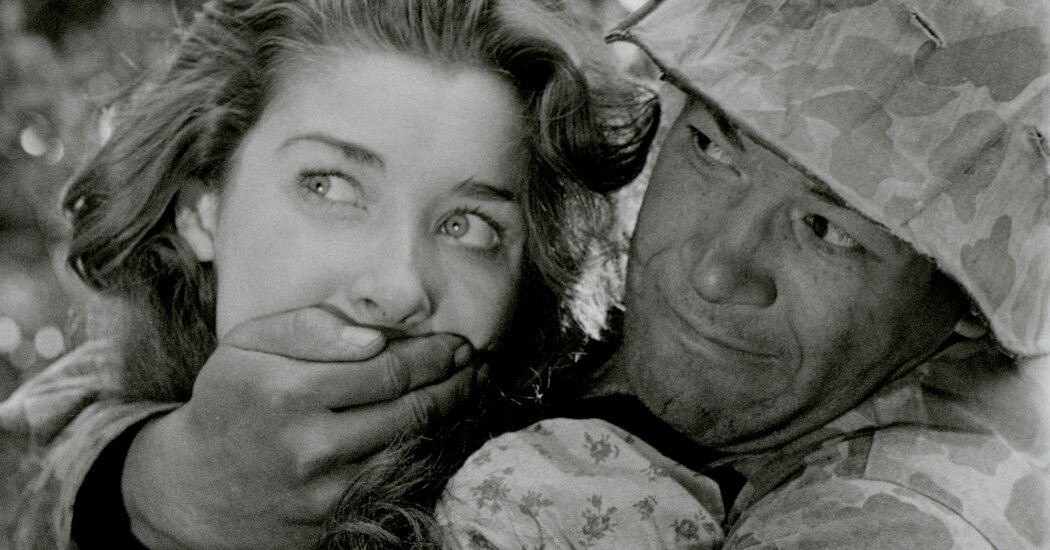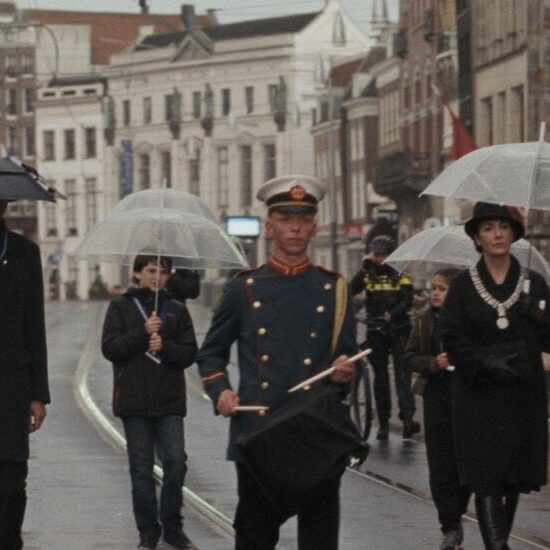
Seen in retrospect, a first feature by a major filmmaker can be a revelation particularly if, as with Stanley Kubrick’s low-budget war movie “Fear and Desire,” it concerns a career-long preoccupation — and even more so if the filmmaker has attempted to suppress it.
An independent production which, although fictional, premiered in the documentary section of the 1952 Venice Film Festival, “Fear and Desire” is getting a weeklong run at Metrograph, 70 years after its release in the United States.
Kubrick, 23, had left his job as a staff photographer for Look magazine when he undertook the project, crediting himself as director, photographer and editor, as well as producer. The means were modest; the story, written by a high-school buddy, Howard Sackler, was epic. A portentous voice-over locates the action “outside history.” Four universal — albeit obviously American — soldiers, trapped six miles behind enemy lines, battle their respective demons in an attempted return to base.
In addition to its allegorical framework, the film partakes in then fashionable existentialism. The same actor (Kenneth Harp) is cast as both the squad’s loquaciously philosophical lieutenant and an equally introspective enemy general. The soundtrack is heavy with the men’s internal musings. The new digital restoration includes nine minutes, mostly post-dubbed dialogue, cut after Venice when the film’s title was changed from “The Shape of Fear” by the distributor Joseph Burstyn, the pre-eminent U.S. importer of Italian neorealist films who also released the independent classic “Little Fugitive” in 1953.
However arty, “Fear and Desire” is squarely in the American B-movie tradition. The situation — a cutoff platoon — and the pragmatic use of close-ups suggest Samuel Fuller’s Korean War quickie “The Steel Helmet,” which opened in 1951. Instantly notorious for depicting an American war crime, it is a movie Kubrick might well have seen.
In Fuller’s film, an enraged soldier shoots an unarmed North Korean prisoner of war. In Kubrick’s, an unbalanced recruit (the future director Paul Mazursky) abuses and ultimately kills a local woman (Virginia Leith) who, having stumbled upon the four soldiers, is bound to a tree, and left in his charge. The sequence which juxtaposes Mazursky’s babbling with the woman’s petrified silence is the movie’s heart of darkness. Although Leith has virtually no dialogue, her image was featured in the movie’s ads.
“Fear and Desire” is clumsily dubbed but strikingly photographed. A.H. Weiler’s New York Times review was both sympathetic and supportive, crediting Kubrick and Sackler with “a moody, often visually powerful study” of men under stress. The movie was not, however, a success. Nor was it a fond memory for its maker.
When “Fear and Desire” was revived at Film Forum in 1994, Kubrick had a Warner Bros. publicist bombard local critics with letters expressing Kubrick’s feeling that the movie was nothing more than a “bumbling amateur film exercise,” written by a failed poet (an unkind reference to Sackler, who some 25 years after “Fear and Desire” was awarded a Pulitzer for his play “The Great White Hope”).
Kubrick characterized “Fear and Desire” as “a completely inept oddity, boring and pretentious.” While undeniably pretentious, the movie is neither inept nor boring. Its oddity lies in its being both a prelude and footnote to Kubrick’s remarkable career.
Fear and Desire
Sept. 22-29, Metrograph in Manhattan, metrograph.com.













